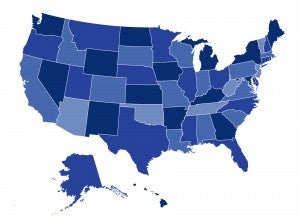
While open enrollment has ended, consumers who have qualifying events will still be able to apply for Marketplace coverage under a special enrollment period (SEP). A SEP is available to individuals experiencing a qualifying event like losing other types of recognized health insurance (i.e., employer coverage or Medicaid), getting married, having a baby or moving. While federal regulations provide what types of qualifying events trigger a SEP, state-based marketplaces (SBMs) can identify additional qualifying events under their authority to address “exceptional circumstances” that qualify individuals for a SEP. In 2014, for example, FFM (federally facilitated marketplaces) and SBMs used this authority to provide a SEP for victims of domestic abuse and individuals eligible for COBRA.
In 2014, some experts had projected significant eligibility for SEPs in 2014, projecting estimates in the millions, particularly for younger adults (between 18 and 34 years of age) who experience common qualifying events like marriage or moving at a higher rate. In a recently published issue brief by the Urban Institute and CHIR, we found that SEP enrollment in 2014 among some SBMs was still a work in progress, not yet matching the significant potential for increasing Marketplace enrollment throughout the year. The authors looked at five state-based Marketplaces (SBMs)-California, District of Columbia, Kentucky, Minnesota, and Washington-and found that these SBMs faced various challenges that limited their ability to maximize Marketplace enrollment with SEPs throughout the year. These challenges ranged from the lack of capacity due to lingering first year launch issues to the difficulty of marketing and targeting consumers for various qualifying events related to SEPs. However, moving forward, SBM officials in the five study states anticipate a greater focus on SEPs. The full report is available here.
Under new federal regulations, SEPs will apply to individuals who have a court order to provide health insurance coverage, who experience a death of an enrollee or dependent, or who are losing a dependent or dependent status as a result of a legal separation or divorce. Consumers with non-calendar year plans are also eligible for a SEP when their coverage ends even though they are eligible to renew their coverage. The FFM has also announced a SEP to individuals facing a tax penalty for being uninsured in 2014 that is available this year from March 15 to April 30. The 2014 tax year is the first year that the penalty for not having health insurance will be levied; the penalty amounts to the greater of 1% of income or $95 per individual, and increases for 2015 to the greater of 2% of income or $325 per individual. This tax penalty related SEP is available for consumers, facing the tax penalty for 2014, who did not enroll into 2015 coverage because they were previously unaware of the tax penalty until they filed their 2014 tax returns. This tax-related SEP is currently available to consumers with a FFM and about half of the state-based marketplaces.
Going forward, a greater focus on SEPs will likely reflect an overall shift to maximizing enrollment as open enrollments have shorter timeframes and as federal and state regulators continue to address what life events and circumstances qualify for a special enrollment.

